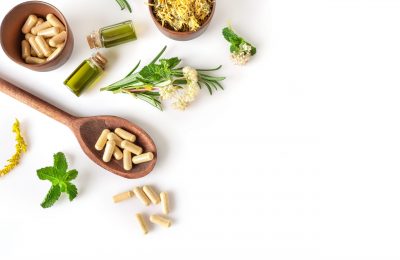How can spa operators perk up their client loyalty through retail programs? We asked five experts.
Moisturizing: A made to measure strategy
Water is a source of youth and vitality. It is at the origin of all biochemical reactions and therefore plays a fundamental role in our organism. When our skin cells are lacking in water they don’t function as well and become more vulnerable. This can lead to accelerated aging, increased reactivity, increased sensitivity to environmental and climatic stressors, etc. Under normal physiological conditions, the surface of the skin contains 20% water while the lower layers of the epidermis contain 70%. If this gradient is maintained, skin is considered to be ideally hydrated and its suppleness and elasticity are preserved.
Hydrolipidic layer
The hydrolipidic layer covers the surface of the skin like an invisible, non-occlusive film. It’s an emulsion composed of sweat, sebum, cell debris, and water coming from the lower layers of the skin. Its quantity and composition vary according to the individual, the part of the body, the season, the level of humidity in the air, and stress. This layer slows the evaporation of water from the skin’s surface. It also contributes to the skin’s suppleness.
The Natural Moisturizing Factor (NMF)
The NMF is located under the surface of the skin, in the stratum corneum. It is composed of water-soluble substances, predominantly free amino acids and their derivatives, as well as components such as lactic acid, urea and sugars. The substances that make up the NMF are hygroscopic, meaning that, like a magnet, they not only attract water but also retain water, thereby ensuring that the skin remains better hydrated. Exposure to UV rays, disease and aging may lead to a decrease in the quantity of NMF.
Intercorneocytory cement
The keratinocytes of the stratum corneum (where the NMF is located) are naturally surrounded by lipids, including ceramides, essential fatty acids and cholesterol. These substances prevent the excessive evaporation of water contained in the skin and protect the skin against harmful intruders such as bacteria. This combination of NMF and lipids is also referred to as the skin’s barrier.
Lack of lipids or lack of water?
In summer as well as in winter, skin needs to be moisturized because water evaporates continuously through the skin, especially when the humidity level in the air is low. In other words, all skin needs moisturizing, whatever the type of skin, and moisturizing skin care products should always contain hygroscopic substances (elements of the NMF, sugars, etc.). Moisturizing, film-forming molecules such as hyaluronic acid are also beneficial because they form a moist microclimate on the surface of the skin that lasts all day long and, as a bonus, they smooth wrinkles and provide a plumping effect. In terms of texture, oil-free gel or serum type moisturizing products are the ideal solution and are suitable for all skin types. The composition of the moisturizer needs to be adjusted, either more or less rich, depending on the season. For added benefit, we also recommend a soaking of the stratum corneum.
Dry skin
It is necessary to use moisturizers that are rich in lipids, preferably identical to or very similar to those which make up the intercorneocytory cement (ceramides, free fatty acids, cholesterol, plant sterols). These will help compensate for the lack of lipids in the intercorneocytory cement and will strengthen the skin’s barrier. In more serious cases, or when skin is affected by a cold climate, by wind or by electric heaters for example, anti-dehydrating agents need to be added, meaning hydrophobic film-forming surface-active substances, which are more or less occlusive (waxes and vegetable oils, silicones), to effectively slow the evaporation of water contained in the skin. It’s important to ensure these substances are non-comedogenic.
Oily skin
There are excellent completely glycerine-free serums available, in the form of aqueous fluid gels, which penetrate very well and don’t overload the epidermis. They also generally contain added values for oily skin, such as ingredients that control the production of sebum as well as anti-imperfection or brightening properties. These can be recommended for daily use under a light texture sunscreen. Paradoxically, oily skin can also lack lipids. In this case, the best option may be “oil-free” formulas.
Combination skin
An oil-free moisturizer is the best choice for the T-zone regardless of the season. For the rest of the face, it is recommended to use a moisturizer designed for normal to dry skin, of a richer texture in winter and a lighter texture in summer.
Sensitive skin
Sensitive skin is skin whose barrier is damaged to the point that it no longer plays its protective role. In this case, it is recommended to use the same solutions as for dry skin but to also seek out products that offer soothing properties as well as humectant, anti-dehydrating and lipid-replenishing properties.
Mature skin
Over time, the quantity as well as the quality of the skin’s lipids may decrease. Most anti-wrinkle or anti-aging treatments contain hygroscopic, film-forming and lipid-replenishing substances. In this case as well, the composition of the moisturizer, either more or less rich, must be adjusted depending on the season.
A good moisturizing strategy is paramount in any skincare routine. It represents an essential step in the same way as the use of adapted epidermal cleansers and exfoliants. Moisturizing strategies should be reviewed and adjusted by the esthetician at each change of season.




